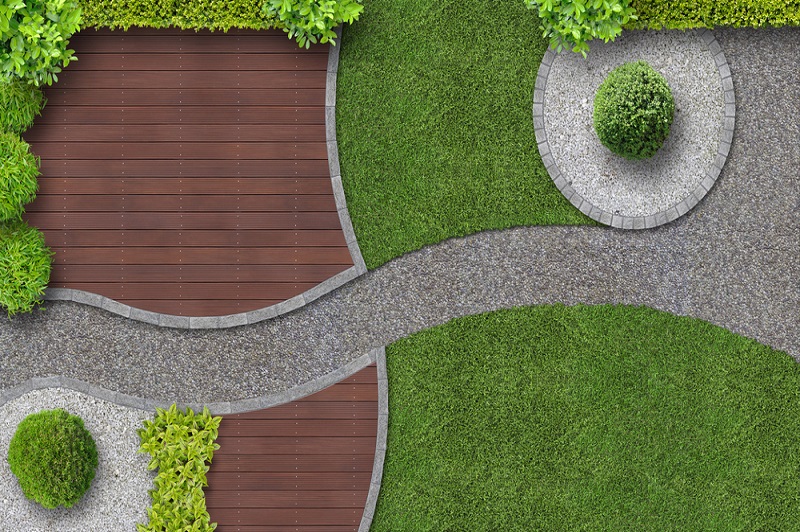Some Known Facts About Landscapers.
Table of ContentsThe Facts About Landscapers RevealedIndicators on Landscapers You Should KnowLandscapers Things To Know Before You Get ThisGetting The Landscapers To WorkExamine This Report about LandscapersThe 8-Second Trick For Landscapers
- A yard feature where water is represented by an aggregate stone product, normally a crushed rock or granite.- A rock or natural flagstone patio area, course, or sidewalk constructed without a concrete base.- A stone retaining or totally free standing wall developed without making use of mortar. An extremely experienced mason is required for a dry stack stone wall. Many walls in Portland are not dry stacked, also if they seem. - A below ground framework that collect water and allows it to slow percolate into the dirt around it.
Landscape style that works with a sites' environment in both look and sustainability without adverse influences to the atmosphere. Edging in the landscape is a line of demarcation that develops aesthetic rate of interest in the garden by separating one sector from one more section. This can be aesthetic or useful, maintaining one aspect (such as pea gravel) from obtaining blended into an additional (like bark dust).
Locations can likewise sense of "room" offered by trees, various other plantings, fencings, or screens. The landscape near the entry to a structure. A tree, shrub or creeping plant, educated to expand on a wall surface or fence into a particular pattern. Especially valuable for fruit trees, making it simple to harvest the fruit and consisting of mess.
Landscapers for Beginners

The component in a landscape layout or location in a landscape that is meant to be most famous. The centerpiece can be a plant, boulder, statuary, gathering space, or other landscape feature. A style of yards or yard components that emphasize straight lines, ideal angles and circles. Shrubs or bushes found in beds near the foundation of a home or other framework.

About Landscapers
Rock product, either rounded or fractured, that is reasonably small- normally 1" or much less. Low plants that are enabled or urged to spread over an area. Can describe any kind of "hard" garden aspects consisting of statuary or boulders however a lot of commonly is utilized to describe courses, patio areas, and walls.: Height difference between the degree of water in a fish pond (or the degree of the pump if it sits outside the pond) and the upper websites outlet of water resource which affects efficiency of the water pump in gph (gallons per hour). Thick shrubs or trees that form a fence, screen, or limit.
Fencing boards that run horizontally, commonly made use of in contemporary or Japanese-inspired landscape styles. Appropriate use of fictional lines can aid the landscape really feel linked to the home and other components.
An even more kicked back garden dominated by bent instead of straight bed lines and a less rigid framework. Standard PNW landscapes are informal. A plant that spreads out even more than preferred, or into environments where it does damage. Portland has a checklist of invasive plants that should not be installed in landscapes because they can infect forests or waterways and be difficult to control.
The Landscapers Diaries
Can include head positionings and coverage, pipe sizing, GPM specs, and materials required to install this system. Accredited specialist who develops landscapes, educated in design and design as well as in horticulture.
The expert that prepares and creates landscape tasks, usually at a property or little business level with the major layout motivation on growings. Landscape designers usually have less education than Landscape Architects and are not licensed. A completed landscape design, detailing all elements for the new landscape. This normally takes the form of a drawing on paper.
Making use of many growings of the same range to load in a location in the landscape. This can reduce maintenance and water usage in the garden.
A layer of compost or bark dirt applied at the base of a plant. A plant that was existing in a geographical area prior to people started changing the landscape.
Facts About Landscapers Revealed
Exactly how the yard or a yard aspect is arranged in connection to an existing or brand-new function or to an instructions. Grasses that are not mowed yet expanded in landscapes as perennials.

Plants that provide seasonal passion and after that pass away back in the winter months. Cold period lawn that is the most typical lawn yard in Rose city, OR and the rest of the PNW.An open roofed framework over an outdoor patio or various other landscape function.
Lava accumulated varying in dimension More Help from 1/4" to dirt. The most usual landscape gravel in the PNW. Location of the landscape developed to manage rainfall water until it can saturate right into the ground. A chain that regulates water as it takes a trip from a roofing system gutter to the ground. Yard structure that creates a growing area that is had and greater than the surrounding grade.
Framework constructed from wood, concrete, paving stones, blocks or other materials for maintaining inclines and protecting against too much disintegration. Slim watercourse. Creating a yard function being composed mostly of stones with plantings that complement and can prosper in the rough environment. Lawn sprinkler head design that revolves a stream of water across an area.
Landscapers Can Be Fun For Everyone
